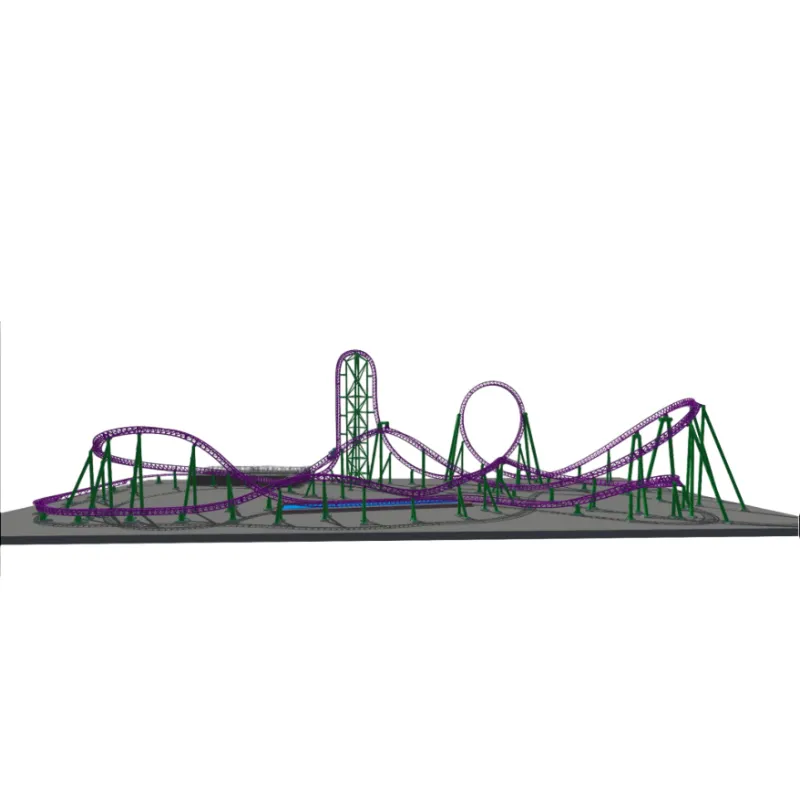Exploring the Creative Potential of Innovative Carousel Design and Manufacturing Techniques for Modern Applications
The Enchantment of the Carousel A Journey through History and Imagination
Carousels, with their colorful lights, melodic tunes, and charmingly intricate designs, hold a special place in the hearts of people around the world. Known as roundabouts or merry-go-rounds, these delightful attractions have enchanted generations, offering a portal to nostalgia, joy, and innocent adventure. At the heart of these wonders lies the artistry and craftsmanship of the carousel factory, where dreams are sculpted into reality.
The history of carousels dates back to the Middle Ages, originally intended as training devices for knights. These wooden steeds allowed young nobles to practice their horsemanship and combat skills in a safe environment. Over time, this practical application evolved into a form of entertainment, and by the 18th century, carousels began to appear at fairs and amusement parks across Europe.
The transition from battlefield training to joyful amusement was largely influenced by the Industrial Revolution. This era brought about technological innovations, allowing carousel factories to flourish. Craftsmen began to integrate mechanized elements with the artistry of hand-carved horses and menagerie animals. Each creation was unique, embellished with ornate details that reflected the culture and artistry of the time.
Visiting a carousel factory today is akin to stepping into a time capsule of tradition and creativity. At first glance, one is captivated by the sight of vibrant colors and the regal horses suspended in mid-gallop. Artisans and craftsmen work diligently, often employing centuries-old techniques passed down through generations. Wood, metal, and paint come together under their skilled hands, with each piece telling a story of its own.
carousel factory

The construction of a carousel involves meticulous attention to detail. The wooden figures start as rough sketches, which are transformed into three-dimensional forms through careful chiseling and sanding. Once completed, the horses and other animals are painted in bright, eye-catching colors, often adorned with gems, gold leaf, and intricate designs that make them appear alive.
In addition to the artistic aspect, these factories also focus on the mechanics that allow carousels to operate seamlessly. Gears, motors, and lights are integrated into the design, creating a harmonious blend of art and technology. The enchanting music that accompanies the ride is another crucial element, with composers often creating unique soundtracks that enhance the whimsical experience.
The role of carousel factories is not just to produce rides for amusement parks; they are custodians of tradition and pioneers of innovation. Many modern companies are now looking toward sustainability, utilizing eco-friendly materials and methods in their production processes. This commitment ensures that the joy of carousels can be enjoyed by future generations while being mindful of our planet.
Moreover, carousels are more than mere attractions; they serve as gathering places for families and friends. The moment a child picks a brightly painted horse and grips the pole, an adventure begins. The rhythmic motion, combined with the cheerful music, creates an atmosphere where laughter and joy flourish.
In conclusion, carousel factories are the beating heart of one of the world’s most beloved attractions. Through the mastery of craftsmanship, dedication to tradition, and innovation, they not only create rides but also preserve a cherished part of cultural history. As we spin round and round on these beautifully crafted carousels, we are reminded of the fleeting nature of childhood dreams and the joy that comes from embracing the magic of imagination. Each ride is a return to the simplicity of happiness, a reminder that sometimes, in the whirl of life, all we need is a ride on a carousel to recapture the wonder.
-
Top Amusement Equipment Manufacturer Rock n Roller Coaster & Carousel ManufacturerJun.10,2025
-
World's Scariest Roller Coaster Experience Ultimate Thrill & HeightJun.10,2025
-
Ultimate Thrill Ride Roller Coaster High-Speed, Safe AdventureMay.30,2025
-
Carousel Mansfield Rides Premium Indoor & Event SolutionsMay.30,2025
-
T3 Roller Coaster High-Thrill, Safe Ride for Theme Parks & ResortsMay.30,2025
-
Roller Coaster Cart Design Custom-Built & High-Safety Thrill Ride VehiclesMay.30,2025
